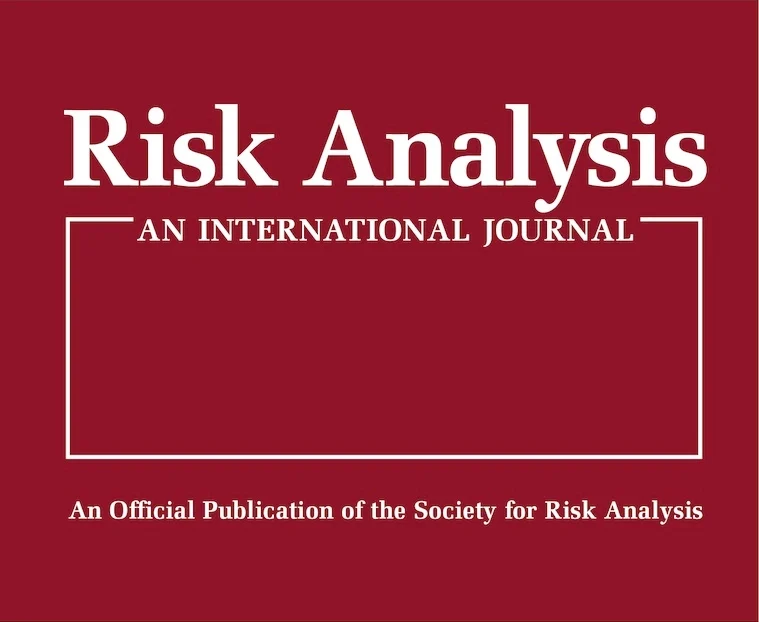Summary
A recent study in Risk Analysis by researchers at the Technology and Information Policy Institute (TIPI) found that a shared sense of duty around seeking flood information — if your family or community thinks it’s important to do, so will you — is the most important factor behind Texas residents’ motivations to search for flood information. This reveals that community-based and grassroots-led education can be an effective way of strengthening people’s desire to seek flood risk information.
Residents who have experienced floods in the past are more inclined to seek out flood information. On the other hand, residents who live in more flood-prone zip codes are not more likely to seek flood information than residents who live in areas with lower flood risk. This was a surprising finding and suggests that 1) we need to improve our flood communication efforts in Texas because residents may be unaware they have flood risk, or 2) residents are tuning out flood information and might be overwhelmed or overloaded. We will be conducting additional research in this area to learn more about flood risk attitudes and ways to communicate flood risk in Texas.
The published study is part of the Understanding Flood Communication & Education in Texas Project.
Problem
Over the next 30 years, it is estimated that 26 million properties are at risk of flooding in the United States.1 Across the state of Texas, there are approximately 1.4 million properties at risk of flooding over the next 30 years.2 Texas leads the nation for the most flood-related fatalities, and is the only state to record flood fatalities every year from 1959 to 2019 — except during 2011 when the state experienced a historic drought.3,4 In light of the latest changes in the National Flood Insurance Program’s (NFIP) risk rating methodology (called Risk Rating 2.0)5, as well as new efforts to map at-risk regions in Texas that have experienced dramatic population growth in recent years6, it is important to understand how Texas residents are currently seeking out flood information.

Key Takeaways
Study findings suggest that living in a higher flood-risk zip code does not change how a resident seeks out flood information. However, when an individual has experienced floods in the past, they believe that floods are more likely to happen, which in turn makes them more concerned and inclined to search for flood information.
Social norms (i.e., friends as well as family and community members believing in the importance of seeking flood information) and more positive attitudes towards seeking flood information are both important drivers behind Texas residents’ motivations to get flood information — whether they live in flood-prone or less flood-prone areas.
Additionally, the higher residents perceive their probability of experiencing flooding, the more negative emotions around flooding they experience, and this increases their intent to seek flood information. This result suggests we need to find ways to better explain the chance of experiencing a flood — because when people understand they are at higher risk, they feel the emotions that drive them to learn more.
Methodology
The study used a theoretical model known as PRISM (Planned Risk Information Seeking Model) to determine the variables used to better understand what drives people to seek flood information. Residents representing the demographics found in Texas were recruited to take the survey. Our research team deliberately oversampled residents who lived in high flood-risk areas to ensure we had an adequate sample size for comparisons.7 Participants (N = 1,079)8 were asked about the following:
-
- Whether they knew how to search for information about flood risks
-
- Whether most of their friends, family, or community expects them to seek information about flood risks
-
- Their attitude towards seeking flood risk information
-
- To rate their knowledge about flood risks
-
- To rate how much knowledge they would need to successfully handle flood risks
-
- Their views on the likelihood (probability) of flooding
-
- Their views on the severity of flooding
-
- To what extent they felt different negative emotions when they thought about flooding
-
- Their intent to seek flood risk information
References and Additional Information
1Risk Factor (n.d.). Climate risk across the United States. https://riskfactor.com
2Flood Factor (n.d.). Flood risk overview of Texas. https://riskfactor.com/state/texas/48_fsid/flood#flood_risk_overview
3Han, Z., & Sharif, H. O. (2021). Analysis of flood fatalities in the United States, 1959-2019. Water, 13, 1871. https://doi.org/10.3390/w13131871
4Sharif, H. O., Jackson, T. L., Hossain, M., & Zane, D. (2015). Analysis of flood fatalities in Texas. Natural Hazards Review, 16(1), 04014016. https://doi.org/10.1061/(ASCE)NH.1527-6996.0000145
5Federal Emergency Management Agency. (2022). Risk rating 2.0: Equity in action. https://www.fema.gov/flood-insurance/risk-rating
6Mukherjee, F., & Singh, D. (2020). Detecting flood prone areas in Harris County: A GIS based analysis. GeoJournal, 85(3), 647–663. https://doi.org/10.1007/s10708-019-09984-2
7To define high flood-risk, our research team used the FEMA Community Engagement Prioritization Tool (CEP-Tool or CEPT; version 2.0) with two parameters: the Population Percent in the Floodplain, and Individual Assistance Payments requested from the Federal Emergency Management Agency (FEMA) (i.e., geographical location and prior aid received, respectively). Our researchers coded Texas zip codes below the mean as lower flood-risk areas, and Texas zip codes at or above the mean as higher flood-risk areas. Sixty-nine percent (n = 745) of the sample lived in areas with a higher flood risk, and 60% (n = 643) had experienced flooding in the past.
8Survey takers were presented with attention check questions asking them to type three words that came to mind when thinking about floods. If the words were repeated or did not make sense, or if any of the responses were problematic (i.e., participants rushed through the survey), responses were removed from the dataset. Sixty-eight responses were removed from the dataset.
